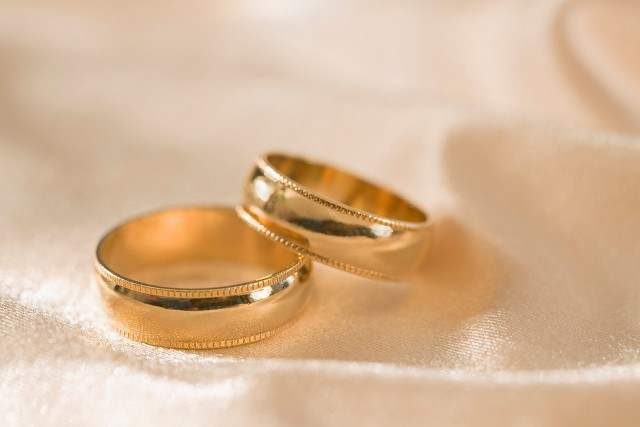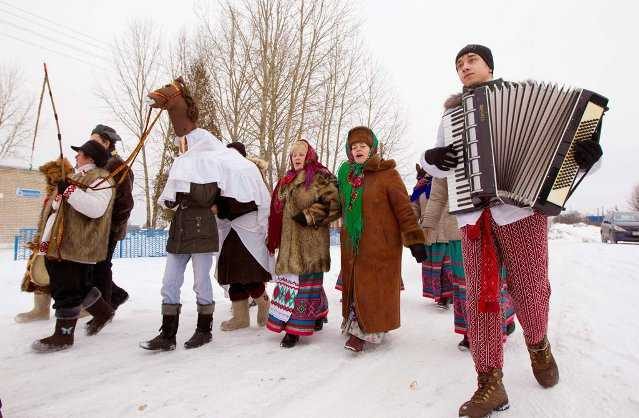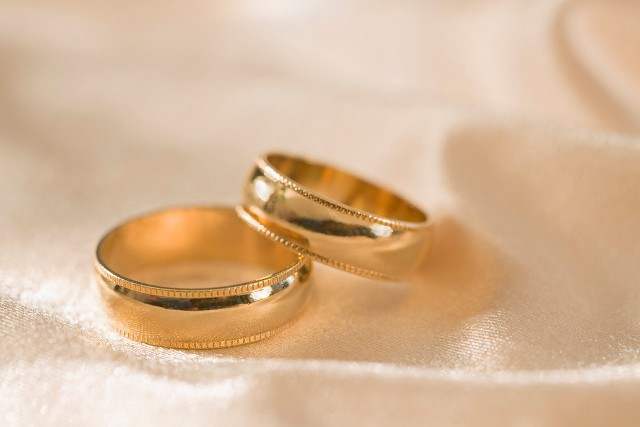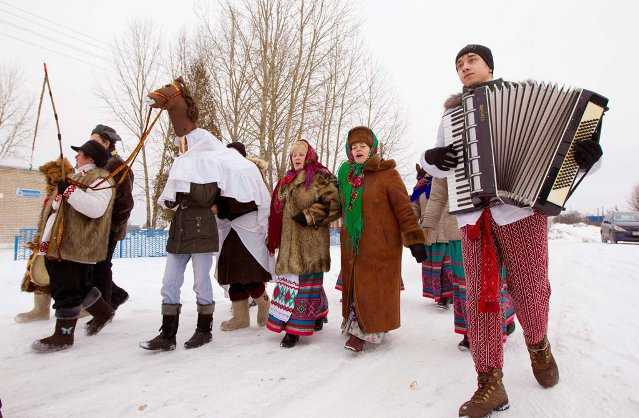Leap year calendar. What is a leap year?
Did you know that not every 4th year is a leap year? Why leap year considered unlucky, and what signs are associated with this?
What does leap year mean?
1. A leap year is a year with 366 days instead of 365 as usual. An extra day in a leap year is added in February - February 29 (leap day).The extra day in a leap year is necessary because it takes just over 365 days to complete one revolution around the sun, or rather 365 days, 5 hours, 48 minutes and 46 seconds.
Humans once followed a calendar of 355 days with an extra month of 22 days every two years. But in 45 B.C. Julius Caesar, together with the astronomer Sosigenes, decided to simplify the situation, and the Julian 365-day calendar was developed with an extra day every 4 years to compensate for the extra hours.
This day was added in February as it used to be last months in the Roman calendar.
2. This system was supplemented by Pope Gregory XIII (who introduced the Gregorian calendar), who coined the term "leap year" and declared that a year that is a multiple of 4 and a multiple of 400, but not a multiple of 100, is a leap year.
So according to the Gregorian calendar, 2000 was a leap year, but 1700, 1800 and 1900 were not.
What are leap years in the 20th and 21st centuries?
1904, 1908, 1912, 1916, 1920, 1924, 1928, 1932, 1936, 1940, 1944, 1948, 1952, 1956, 1960, 1964, 1968, 1972, 1976, 1980, 1984, 1988, 1992, 1996, 2000, 2004, 2008, 2012, 2016, 2020, 2024, 2028, 2032, 2036, 2040, 2044, 2048, 2052, 2056, 2060, 2064, 2068, 2072, 2076, 2080, 2084, 2088, 2092, 2096February 29 - leap day

3. February 29 is considered the only day when a woman can propose marriage to a man. The tradition began in 5th century Ireland when Saint Brigid complained to Saint Patrick that women had to wait too long for a proposal from worshipers. Then he gave women one day in a leap year - the last day in the very short month so that the fair sex can propose to a man.
According to legend, Brigitte immediately knelt down and proposed to Patrick, but he refused, kissing her on the cheek, and offered her a silk dress to soften the refusal.
4. According to another version, this tradition appeared in Scotland, when Queen Margaret, at the age of 5, announced in 1288 that a woman can propose to any man she likes on February 29th.
She also made it a rule that those who refused had to pay a fine in the form of a kiss, a silk dress, a pair of gloves, or money. To warn fans in advance, a woman was supposed to wear trousers or a red petticoat on the day of the offer.
In Denmark, a man who refuses a woman's marriage proposal must provide her with 12 pairs of gloves, and in Finland, fabric for a skirt.
Leap year wedding

5. One in five couples in Greece avoid getting married on a leap year, as it is believed to bring bad luck. In Italy, it is believed that in a leap year a woman becomes unpredictable, and at this time there is no need to plan important events. So, according to the Italian proverb "Anno bisesto, anno funesto". ("Leap year is a doomed year").
February 29

6. The chances of being born on February 29 are 1 in 1461. Around the world, about 5 million people were born on a leap day. 7. For many centuries, astrologers believed that children born on a leap day have unusual talents, a unique personality, and even special powers. Among famous people born on February 29, one can name the poet Lord Byron, the composer Gioachino Rossini, the actress Irina Kupchenko.
8. In Hong Kong, the official birthday for those born on February 29th is March 1st in normal years, while in New Zealand it is February 28th. If you time it right, then traveling from one country to another, you can celebrate the longest birthday in the world.
9. The city of Anthony in Texas, USA is the self-proclaimed "leap year capital of the world." A festival is held here every year, where those who wish from all over the world, born on February 29, gather.
10. The record for the largest number of generations born on a leap day belongs to the Keogh family.
Peter Anthony Keogh was born February 29, 1940 in Ireland, his son Peter Eric was born February 29, 1964 in the UK, and his granddaughter Bethany Wealth was born February 29, 1996.

11. Karin Henriksen from Norway holds the world record for having the most children on a leap day.
Her daughter Heidi was born on February 29, 1960, her son Olav on February 29, 1964, and her son Lief-Martin on February 29, 1968.
12. In the traditional Chinese, Jewish and ancient Indian calendar, not a leap day is added to the year, but a whole month. It is called the "intercalary month". It is believed that children born in a leap month are more difficult to raise. In addition, it is considered unlucky to start serious business in a leap year.
Leap year: signs and superstitions

Since ancient times, a leap year has always been considered difficult and bad for many undertakings. AT folk beliefs the leap year is associated with Saint Kasyan, who was considered evil, envious, stingy, unmerciful and brought misfortune to people. According to legend, Kasyan was a bright angel to whom God entrusted all plans and intentions. But then he went over to the side of the Devil, telling him that God intends to overthrow all satanic power from heaven.
For betrayal, God punished Kasyan, ordering him to be beaten on the forehead with a hammer for three years, and in the fourth year he was released to the ground, where he committed unkind deeds.
There are many signs associated with a leap year:
First, you can't start anything on a leap year. This applies to important matters, business, major purchases, investments and construction.
Also, in a leap year, it is not recommended to change anything, as this will not bring desired result and can even be fatal. During this period, do not plan to move to new house job change, divorce or marriage.
Is it possible to get married or get married on a leap year?

A leap year is considered extremely unlucky for marriage. Since ancient times, it was believed that a wedding played on a leap year would lead to an unhappy marriage, divorce, infidelity, widowhood, or the marriage itself would be short-lived. Such a superstition may be due to the fact that in a leap year, girls could marry anyone they liked. young man who could not refuse an offer. Often such marriages were forced, and therefore family life did not ask.
However, it is worth treating these signs wisely and understanding that everything depends on the spouses themselves and on how they build relationships. If you still planned a wedding, there are several ways to mitigate the "consequences":
Brides are advised to wear long dress for a wedding, covering the knees to make the marriage durable.
wedding dress and others Wedding accessories not recommended to give to anyone.
The ring should be worn on the hand, not the glove, as wearing the ring on the glove will cause the spouses to take the marriage lightly
To protect the family from troubles and misfortunes, a coin was placed in the shoes of the bride and groom.
The bride must keep the spoon from which the groom ate, and on the 3rd, 7th and 40th day after the wedding, the wife had to give her husband to eat from this spoon.
What can not be done in a leap year?

· In a leap year, they do not carol at Christmas time, as it is believed that you can lose your happiness. Also, according to the sign, a caroler who dresses in an animal or monster can take on a personality evil spirits.· Pregnant women should not have their hair cut before childbirth, as the child may be born unhealthy.
In a leap year, you should not start building a bathhouse, which can lead to ailments.
· In a leap year, it is not recommended to tell others about your plans and intentions, as luck may turn away.
· It is not recommended to sell or exchange animals and you should not drown kittens, as this will lead to poverty.
· Do not collect mushrooms, as they are believed to become poisonous.
In a leap year, there is no need to celebrate the appearance of the first tooth in a child. According to the sign, if you invite guests, your teeth will be bad.
You can not change jobs or apartments. According to you, the new place will turn out to be bleak and restless.
· If a child was born in a leap year, he should be baptized as soon as possible, and godparents should be chosen among blood relatives.
· Elderly people should not buy things for the funeral in advance, as this may hasten death.
You can not get divorced, because in the future you will not be able to find your happiness.
"ARH Moscow" and the III Moscow Biennale of Architecture in the Central House of Artists.
Sergei Fadeichev / ITAR-TASS
There is less than a week left until the end of February, but this time we will have to wait a day longer for spring than in the previous three years. This is because 2016 is a leap year, which means that in February there are not 28 days, but 29. Slon Magazine decided to figure out where the tradition of adding one day at the end of February every four years came from and how it affects our lives.
Why is there a 366th day in a leap year?
The astronomical year (also called the tropical or solar year) is the time from one March equinox, which occurs each year on March 20 or 21, to the next. This is the time it takes the Earth to make a complete circle around the Sun. According to the Gregorian calendar, there are 365 days in a year (excluding leap years). In fact, our planet travels this distance in about 365.242189 days, or, more simply, in 365 days 5 hours 48 minutes 45 seconds. It turns out that every year, in which there are exactly 365 days, we accumulate hours “not covered” by the calendar, which after four years form almost a day. To compensate for this and prevent the actual seasons of the year from shifting relative to the calendar seasons, we add one day every fourth of February.
Have you always followed this rule?
No. In fact, if we calculate more precisely, then every four years we accumulate not 24 hours of difference, but a little more than 23 hours. This means that by adding an extra day in February every four years, we even iterate over right time. To correct this, every hundred years a year that should be a leap year does not have an extra day. Moreover, every 400 years this rule is canceled and, therefore, a day is added again. For example, 1700, 1800, and 1900, although divisible by 4 (a leap year condition), were also divisible by 100 and therefore were not leap years. At the same time, the year 2000, which was also divisible by 100 and therefore, it seems, should not be a leap year, it still was, because it was divisible by 400. This is the rule.
What happens if the leap year is cancelled?
Since every year we have a calendar discrepancy of 5 hours 48 minutes 45 seconds, then without adding extra days in leap years, every hundred years we will accumulate a little more than 24 days and more than 96 days every 400 years. This is more than three months, that is, the duration of one season. It turns out that every 400 years without leap years, we would have completely shifted autumn, winter, spring and summer. Not only would it be difficult for us to adapt to the changing seasons, but it would also cause many problems in planning the future, including important ones. religious holidays, such as Christmas or Easter, which are largely associated with seasonal traditions.
Where did the tradition of adding an extra day in a leap year come from?
This rule appeared with the introduction of the Julian calendar in 45 BC. Roman dictator Julius Caesar. A leap year was considered every third year. Extra days were added precisely to February, because this month was considered the last of the year. Subsequently, the emperor Octavian Augustus introduced the tradition of considering a leap year every fourth year (again, without exception). All this generated too many extra days. Adjustments were introduced already in the new, Gregorian calendar, which was adopted in 1582 by Pope Gregory XIII. In Russia, the Gregorian calendar was introduced only in 1918. Then January 31, 1918 was immediately followed by February 14, which compensated for the difference in the dates of the two calendars. According to tradition, the Gregorian calendar is called the new style, and the Julian calendar is called the old style.
Interestingly, history also knows cases of adding the 30th day to February. This, for example, happened at the beginning of the 18th century in Sweden. In 1700, the country began to gradually replace the Julian calendar with the Gregorian, but not by jumping over dates, as all other countries did, but by accumulating discrepancies in dates using leap years. As a result, this led to great confusion, and as one of the measures to correct the situation, the Swedes were forced to add two whole years to 1712 extra days- 29 and 30 February.
Are only days added to our calendar?
Not only. There is also the practice of "extending the day" - adding an extra second. However, it is not as regular as the tradition of leap years. In 1967, the length of the second was clearly defined by the General Conference on Weights and Measures as "a time equal to 9,192,631,770 periods of radiation corresponding to the transition between two hyperfine levels of the ground state of the cesium-133 atom." At the same time, we continue to assume that there are 86,400 seconds in a day. Since the Earth's speed is slowing down due to tidal acceleration and the influence of some geological processes, these two values - the standard second and its actual duration, depending on the speed of the planet's rotation - diverge.
To compensate for this, the International Earth Rotation Service (IERS) decides twice a year to add (or not) an extra second to the day in December or June. Every six months, the IERS reports whether such an addition will occur in the next six months or not, taking into account the ratio of Universal Time (UT1) and International Atomic Time (ITA). For example, in June 2016 (unlike June 2015), an extra second will not be added.
There is a possibility that the "extra seconds" will be abandoned altogether, as they sometimes generate real chaos - some computer systems are not ready for such changes. In 2012, for example, the addition of a second caused major sites such as Mozilla, LinkedIn and FourSquare to crash, and more than 400 flights were delayed by Quantas, an Australian airline.
2016 is a leap year with 366 days instead of the usual 365. Leap year has been proposed to keep the calendars in sync. Did you know that not every 4th year is a leap year?Why is a leap year considered unlucky, and what signs are associated with it?Here are a few facts you may not have known about the leap year.
What does leap year mean?

1 . A leap year is a year that has 366 days instead of 365 as usual. An extra day in a leap year is added in February - February 29 (leap day).
The extra day in a leap year is necessary because it takes a little over 365 days to complete one revolution around the Sun, to be exact. 365 days, 5 hours, 48 minutes and 46 seconds.
Humans once followed a calendar of 355 days with an extra month of 22 days every two years. But in 45 B.C. Julius Caesar, together with the astronomer Sosigenes, decided to simplify the situation, and the Julian 365-day calendar was developed with an extra day every 4 years to compensate for the extra hours.
This day was added in February as it was once the last month in the Roman calendar.
2 . This system was supplemented by Pope Gregory XIII (who introduced the Gregorian calendar), who coined the term "leap year" and declared that year divisible by 4 and divisible by 400 but not divisible by 100, is a leap year.
So according to the Gregorian calendar, 2000 was a leap year, but 1700, 1800 and 1900 were not.
What are leap years in the 20th and 21st centuries?
1904, 1908, 1912, 1916, 1920, 1924, 1928, 1932, 1936, 1940, 1944, 1948, 1952, 1956, 1960, 1964, 1968, 1972, 1976, 1980, 1984, 1988, 1992, 1996, 2000, 2004, 2008, 2012, 2016, 2020, 2024, 2028, 2032, 2036, 2040, 2044, 2048, 2052, 2056, 2060, 2064, 2068, 2072, 2076, 2080, 2084, 2088, 2092, 2096
February 29 - leap day

3 . February 29 is considered the only day a woman can propose to a man. The tradition began in 5th century Ireland when Saint Brigid complained to Saint Patrick that women had to wait too long for a proposal from worshipers.
Then he gave women one day in a leap year - the last day in the shortest month, so that the fair sex could propose to a man.
According to legend, Brigitte immediately knelt down and proposed to Patrick, but he refused, kissing her on the cheek, and offered her a silk dress to soften the refusal.
4 . According to another version, this tradition appeared in Scotland, when Queen Margaret, at the age of 5, announced in 1288 that a woman can propose to any man she likes on February 29th.
She also made a rule that those who refused had to pay a fine in the form of a kiss, a silk dress, a pair of gloves, or money. To warn fans in advance, a woman was supposed to wear trousers or a red petticoat on the day of the proposal.
In Denmark, a man who refuses a woman's marriage proposal must provide her with 12 pairs of gloves, and in Finland, fabric for a skirt.
Leap year wedding

5 . One in five couples in Greece avoid getting married on a leap year, as it is believed that this brings bad luck.
In Italy, it is considered that in a leap year woman becomes unpredictable and at this time you do not need to plan important events. So, according to the Italian proverb "Anno bisesto, anno funesto". ("Leap year is a doomed year").
February 29

6 . The odds of being born on February 29 are 1 in 1461. Around the world, about 5 million people were born on a leap day.
7 . For centuries, astrologers believed that children born on a leap day have unusual talents, a unique personality, and even special powers. Among the famous people born on February 29, one can name the poet Lord Byron, the composer Gioachino Rossini, the actress Irina Kupchenko.
8. In Hong Kong, the official birthday for those born on February 29th is March 1st in normal years, while in New Zealand it is February 28th. If you calculate the time correctly, then traveling from one country to another, you can celebrate longest birthday in the world.
9. The city of Anthony in Texas, USA is a self-proclaimed " leap year capital of the world". A festival is held here annually, where those who wish from all over the world, born on February 29, gather.
10. Record the largest number of generations born on a leap day, belongs to the Keogh family.
Peter Anthony Keogh was born February 29, 1940 in Ireland, his son Peter Eric was born February 29, 1964 in the UK, and his granddaughter Bethany Wealth was born February 29, 1996.

11. Karin Henriksen from Norway holds the world record having the most children on a leap day.
Her daughter Heidi was born on February 29, 1960, her son Olav on February 29, 1964, and her son Lief-Martin on February 29, 1968.
12. In the traditional Chinese, Jewish and ancient Indian calendar, not a leap day is added to the year, but a whole month. It is called the "intercalary month". It is believed that children born in a leap month are more difficult to raise. In addition, it is considered unlucky to start serious business in a leap year.
Leap year: signs and superstitions

Since ancient times, a leap year has always been considered difficult and bad for many undertakings. In popular belief, the leap year is associated with Saint Kasian, which was considered evil, envious, stingy, unmerciful and brought misfortune to people.
According to legend, Kasyan was a bright angel to whom God entrusted all plans and intentions. But then he went over to the side of the Devil, telling him that God intends to overthrow all satanic power from heaven.
For betrayal, God punished Kasyan, ordering him to be beaten on the forehead with a hammer for three years, and in the fourth year he was released to the ground, where he committed unkind deeds.
There are many signs associated with a leap year:
First, in a leap year can't start anything. This applies to important matters, business, major purchases, investments and construction.
Is it possible to get married or get married on a leap year?

A leap year is considered extremely unsuccessful for marriage. Since ancient times, it was believed that a wedding played on a leap year would lead to an unhappy marriage, divorce, infidelity, widowhood, or the marriage itself would be short-lived.
Such a superstition may be due to the fact that in a leap year, girls could woo any young man they liked who could not refuse an offer. Often such marriages were forced, and therefore family life was not set.
However, it is worth treating these signs wisely and understanding that everything depends on the spouses themselves and on how they build relationships. If you still planned a wedding, there are several ways to mitigate the "consequences":
Brides are advised to wear long wedding dress covering the knees to make the marriage durable.
Wedding dress and other wedding accessories not recommended to give to anyone.
The ring should be worn on the hand, not the glove., since wearing a ring on a glove will cause spouses to be frivolous about marriage
To protect the family from troubles and misfortunes, a coin was put in the shoes of the bride and groom.
What can not be done in a leap year?

・In a leap year do not carol at Christmas time because it is believed that you can lose your happiness. Also, according to a sign, a caroler who dresses in an animal or a monster can take on the personality of evil spirits.
· Pregnant women shouldn't cut their hair before giving birth. because the baby may be born unhealthy.
・In a leap year do not start building a bath which can lead to illness.
· Can't pick mushrooms, since it is believed that they all become poisonous.
In a leap year, you do not need to celebrate the appearance baby's first tooth. According to the sign, if you invite guests, your teeth will be bad.
· You can not change jobs or apartments. According to you, the new place will turn out to be bleak and restless.
If a child was born in a leap year, it must be baptize as soon as possible, and godparents to choose among blood relatives.
Older people should not buy things for the funeral because it can bring death closer.
· Can't get divorced because in the future you will not be able to find your happiness.
The new year 2016 will be a leap year, which means that in it we will live 1 more day - in February, instead of the usual 28 days, there will be 29. An additional 366 day in a leap year on February 29 is due to the fact that the Earth makes its revolution around the Sun in 365 days 5 hours 48 minutes and 46 seconds. To compensate for this difference of almost 6 hours, one day is added to the calendar every 4 years.
Everyone has a different attitude to a leap year - someone considers this period the most ordinary year that does not carry any danger, someone is afraid of it and associates many superstitions with this period. In this article we will try to understand all the signs, beliefs and misconceptions associated with a leap year.
Upcoming Leap Years: 2016, 2020, 2024, 2028, 2032, 2036, 2040.
An extra day in a leap year, February 29, is called Kasyanov Day. In Naoda, this day is considered one of the most difficult and dangerous. Bad attitude By the leap year, in folk beliefs, it was associated with a certain Kasyan, about whom there were many legends and beliefs. According to one legend, Kasyan was an Angel who knew all the affairs and plans of God. However, it later turned out that he was a traitor who told all the plans to the demons. For this he was punished - for 3 years he was beaten on the forehead, and for 4 years he was released to Earth, where he had already committed evil deeds. According to another legend, Kasyan was a saint, but he broke the law and drank alcohol for 3 years, and stopped for 4 years.
Signs for Leap Year 2016
In Leap Year, nothing serious can be started - building a house, major contracts or transactions, purchases, weddings, and much more. All this was forbidden. Because nothing good will come of such undertakings - everything will soon fall apart and bring many more problems with it. Also, if possible, do not change jobs and apartments.
In a leap year, it is better not to start building a bathhouse.
A child born in a leap year needs to take blood relatives as godfathers.
If you live in a village and breed geese, then, when slaughtering a bird in a leap year, give the third goose as a gift to relatives or neighbors.
In the spring of a leap year, when you plant seeds and seedlings for the first time in the garden, say: "In a leap year, it's fine to die."
If you still decide to get married in a leap year, then before the ceremony, say this amulet: "I crown with a crown, and not with a leap year."
People who get divorced in a leap year should buy a new towel. These towels are then taken to the church and given to the cleaners, saying to themselves: “I pay tribute to the leap year, and you, family angel, stand next to me. Amen. Amen. Amen.
In a leap year, leaving home, they say without stepping over the threshold: "I'm going and going along the leap year, I bow to the leap year. I left the threshold, I'll be back here. Amen."
At the first thunder in a leap year, they cross their fingers and whisper: "The whole family is with me (names of your family members). Amen."
Hearing the howl of a dog in a leap year, they say: "Go howl, but not to my house. Amen."
sharky:
03/25/2013 at 16:04
and why is 1900 not a leap year? A leap year occurs every 4 years, i.e. Divisible by 4, it's a leap year. And no more divisions by 100 or 400.
Asking questions is normal, but before you say something, study the materiel. The earth revolves around the sun in 365 days 5 hours 48 minutes 46 seconds. As you can see, the rest is not exactly 6 hours, but 11 minutes 14 seconds less. This means that when making a leap year, we add extra time. Somewhere in 128 years, extra days accumulate. Therefore, every 128 years in one of the 4-year cycles, a leap year is not necessary to get rid of these extra days. But to simplify, a leap year is not made every 100th year. Is the idea clear? Good. But how then to proceed, because an extra day is added every 128 years, and we cut it every 100 years? Yes, we cut off more than it should be, and this must be returned sometime.
If the first paragraph is clear and still interesting, then read on, but it will be more difficult.
So, in 100 years, 100/128=25/32 days of excess time accumulate (this is 18 hours 45 minutes). We do not make a leap year, that is, we subtract one day: we get 25/32-32/32 = -7/32 days (this is 5 hours and 15 minutes), that is, we subtract the excess. After four cycles of 100 years each (after 400 years) we will subtract an extra 4*(-7/32)=-28/32 days (this is minus 21 hours). On the 400th year, we make a leap year, that is, we add a day (24 hours): -28/32+32/32=4/32=1/8 (this is 3 hours).
We make every 4 years a leap year, but at the same time every 100 years is not a leap year and at the same time every 400 years is a leap year, but still every 400 years an extra 3 hours are added. After 8 cycles of 400 years, that is, after 3200 years, an extra 24 hours will accumulate, that is, one day. Then another one is added. required condition: every 3200th year must not be a leap year. 3200 years can be rounded up to 4000, but then again you have to play with added or truncated days.
3200 years have not passed, so this condition, if it is made so, is not yet spoken of. But 400 years have already passed since the approval of the Gregorian calendar.
Years divisible by 400 are always leap years (for now), other years divisible by 100 are not leap years, other years divisible by 4 are leap years.
My calculation shows that in the current state, an error of one day accumulates over 3200 years, but this is what Wikipedia writes about this:
“An error of one day compared to the year of the equinoxes in the Gregorian calendar will accumulate in about 10,000 years (in the Julian - in about 128 years). A frequently encountered estimate, leading to a value of the order of 3000 years, is obtained if we do not take into account that the number of days in a tropical year changes with time and, in addition, the ratio between the lengths of the seasons changes. From the same Wikipedia, the formula for the length of the year in days with fractions paints a good picture:
365,2425=365+0,25-0,01+0,0025=265+1/4-1/100+1/400
The year 1900 was not a leap year, but 2000 was, and special, because such a leap year happens once every 400 years.
